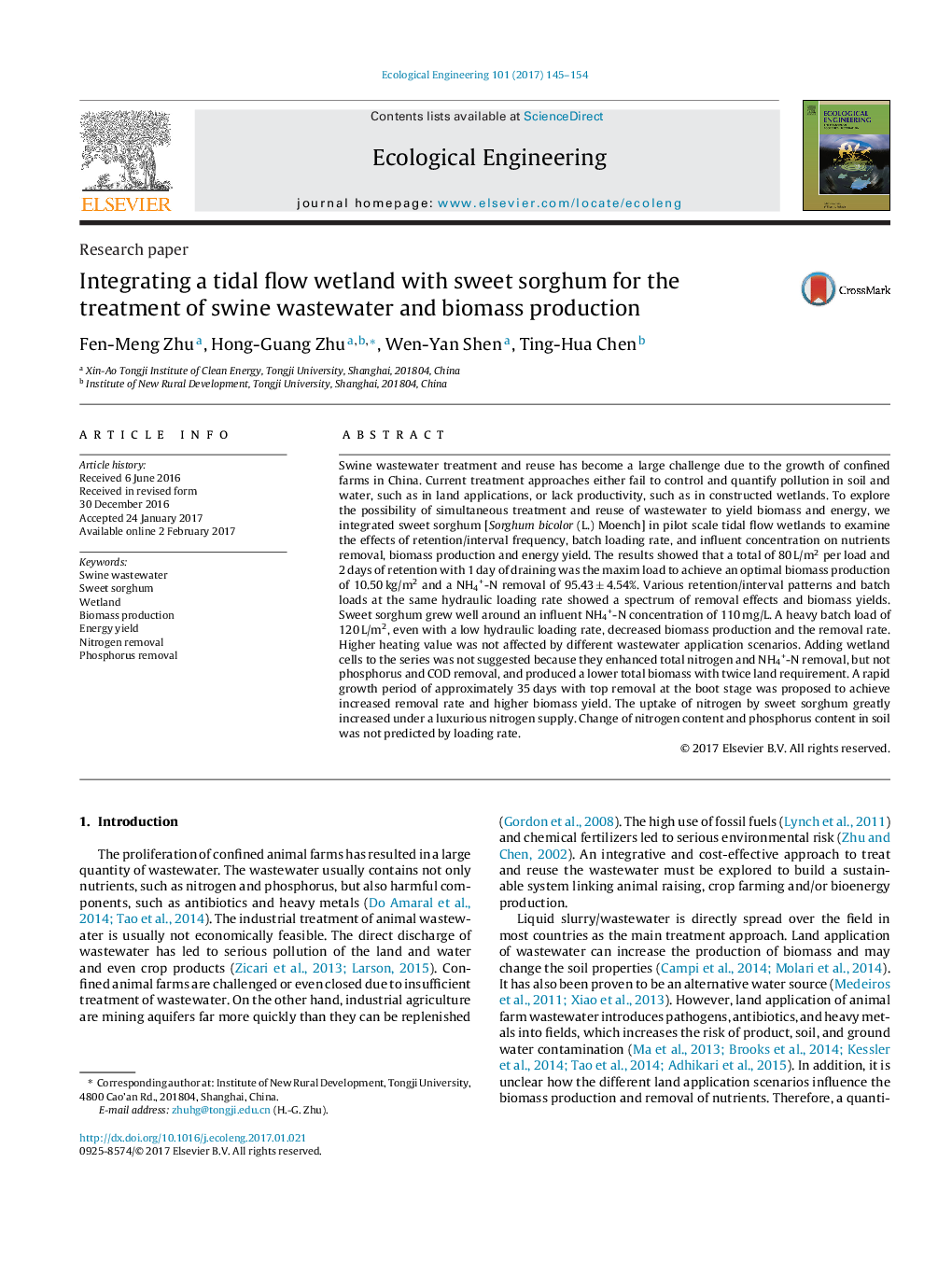| Article ID | Journal | Published Year | Pages | File Type |
|---|---|---|---|---|
| 5743923 | Ecological Engineering | 2017 | 10 Pages |
â¢Sweet sorghum achieved satisfying biomass and energy yield under a wetland condition using animal wastewater.â¢Frequency and interval of wastewater application affected treatment results and biomass yield under same hydraulic loading rate.â¢Rapid growth period of 35 days and regrowth was suggested to achieve higher biomass and enhanced treatment results.â¢Sweet sorghum nitrogen uptake and tissue nitrogen content scope renewed.
Swine wastewater treatment and reuse has become a large challenge due to the growth of confined farms in China. Current treatment approaches either fail to control and quantify pollution in soil and water, such as in land applications, or lack productivity, such as in constructed wetlands. To explore the possibility of simultaneous treatment and reuse of wastewater to yield biomass and energy, we integrated sweet sorghum [Sorghum bicolor (L.) Moench] in pilot scale tidal flow wetlands to examine the effects of retention/interval frequency, batch loading rate, and influent concentration on nutrients removal, biomass production and energy yield. The results showed that a total of 80 L/m2 per load and 2 days of retention with 1 day of draining was the maxim load to achieve an optimal biomass production of 10.50 kg/m2 and a NH4+-N removal of 95.43 ± 4.54%. Various retention/interval patterns and batch loads at the same hydraulic loading rate showed a spectrum of removal effects and biomass yields. Sweet sorghum grew well around an influent NH4+-N concentration of 110 mg/L. A heavy batch load of 120 L/m2, even with a low hydraulic loading rate, decreased biomass production and the removal rate. Higher heating value was not affected by different wastewater application scenarios. Adding wetland cells to the series was not suggested because they enhanced total nitrogen and NH4+-N removal, but not phosphorus and COD removal, and produced a lower total biomass with twice land requirement. A rapid growth period of approximately 35 days with top removal at the boot stage was proposed to achieve increased removal rate and higher biomass yield. The uptake of nitrogen by sweet sorghum greatly increased under a luxurious nitrogen supply. Change of nitrogen content and phosphorus content in soil was not predicted by loading rate.
